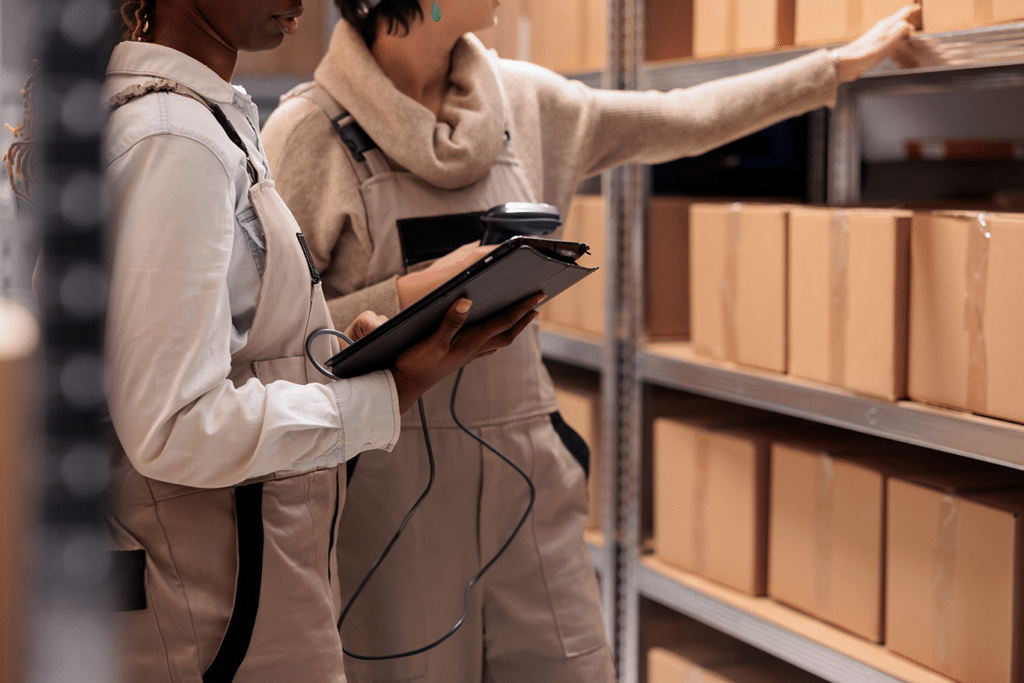Key Takeaways
- Recommerce, also known as reverse commerce, involves selling previously owned, returned, refurbished, or vintage items. It’s gaining traction in the retail sector, especially as sustainability becomes a critical consumer demand.
- Recommerce offers economic advantages by opening new revenue streams and attracts a diverse customer base. It also reduces environmental impact and builds brand loyalty, especially among eco-conscious consumers.
- The recommerce market is expected to continue growing, with technological advancements enhancing efficiency. Consumer preferences are shifting towards sustainable and budget-friendly options, positioning recommerce as a preferred shopping choice.
‘Recommerce,’ or reverse commerce, marks a transformative trend in the retail industry. This practice involves selling previously owned, returned, refurbished, or vintage items.
In the current retail landscape, where sustainability is not just a buzzword but a consumer demand, recommerce has become increasingly relevant.
This trend aligns with the growing consumer interest in eco-friendly shopping practices, offering an alternative to the traditional ‘buy-use-dispose’ model.
The Rise of Recommerce
In the landscape of modern retail, the rise of recommerce stands out as a significant trend, reshaping the way consumers and businesses approach buying and selling. Let’s explore the growth of the recommerce market, backed by compelling statistics, and delves into the key drivers fueling this surge.
Growth Statistics and Market Dynamics
The recommerce market has experienced a remarkable expansion in recent years. For instance, the U.S. apparel resale market was projected to reach $33 billion in 2021, showing a robust compound annual growth rate of 13%. This growth trajectory indicates a shift in consumer behavior and market dynamics, underscoring the increasing importance of recommerce.
Key Drivers of Recommerce
There are several factors that contribute to the burgeoning popularity of recommerce. One of the biggest concerns is about sustainability.
As global awareness of environmental issues intensifies, both consumers and brands are gravitating towards more sustainable practices. The circular economy model, which recommerce exemplifies, minimizes waste and promotes the reuse of products, aligning with these environmental concerns.
As mentioned above, consumer attitudes toward environmental concerns are shifting.
More people now view pre-owned items not just as second-hand products but as valuable and desirable, often imbued with character and history.
Major retail brands like Lululemon, Levi’s, and Patagonia have successfully integrated recommerce into their business models, demonstrating its viability and profitability.
These brands serve as benchmarks in the industry, showcasing how recommerce can be seamlessly woven into traditional retail models.

Benefits of Recommerce for Retailers
Recommerce is not only a consumer-driven trend but presents numerous benefits for retailers.
Economic Advantages
Recommerce opens up new revenue streams for retailers, tapping into a rapidly expanding market. This sector’s impressive growth rate offers a lucrative opportunity for businesses, attracting both price-sensitive customers and those seeking unique, vintage, or gently-used items.
Retailers engaging in recommerce have been observed to grow significantly faster than the broader retail market, highlighting the economic potential of this model.
Like Craigslist before it, Facebook Marketplace allows retailers to take advantage of listing items for sale for free, finding a new market in people looking for used items for a cheaper price.
Environmental Impact
One of the most compelling aspects of recommerce is its positive environmental impact. By facilitating the resale and reuse of products, recommerce significantly reduces waste and promotes sustainable consumption patterns. This approach aligns with the growing global movement towards environmental responsibility and can help retailers minimize their ecological footprint.
Building Brand Loyalty
Engaging in recommerce also helps retailers build and maintain brand loyalty, particularly among environmentally conscious consumers.
Retailers can foster a deeper connection with their customer base by offering sustainable shopping options and demonstrating a commitment to environmental stewardship. This connection is not merely transactional but is grounded in shared values and a mutual concern for sustainability.
Implementing Recommerce in Your Business
Embarking on a recommerce journey requires strategic planning and understanding of the unique demands of this market. Here are key strategies for retailers looking to implement recommerce:
- Trade-In Programs and Partnerships: Retailers can initiate trade-in programs where customers return used items in exchange for store credit or discounts on future purchases.
Partnering with existing recommerce platforms can also provide an efficient entry into the market. This approach reduces the burden of setting up a new infrastructure while leveraging the expertise of established players.
- Logistics Management: A critical aspect of recommerce involves the logistics of collecting, inspecting, and refurbishing used items. Retailers must establish efficient processes for quality checks to ensure the items meet certain standards. This might include cleaning, repairing, or restoring products to a saleable condition. Implementing systems for pricing used items fairly and competitively is also crucial.
- Marketing Strategies: Communication is key in promoting a recommerce initiative. Retailers should highlight the sustainability benefits and cost-effectiveness of buying pre-owned items.
It’s important to educate consumers about the environmental impact of their purchases and how recommerce contributes to a more sustainable future. Marketing efforts should also reassure customers about the quality and reliability of pre-owned products.
Challenges and Considerations
While recommerce presents a lucrative opportunity, it also comes with its set of challenges that retailers must navigate:

- Quality Control and Inventory Management: Managing the quality and variety of second-hand inventory is a significant challenge. Retailers must establish stringent quality control processes to ensure that only items meeting specific standards are resold. Balancing inventory levels to avoid overstocking while maintaining a diverse range of products is also crucial.
- Customer Perception: Overcoming customer skepticism about the quality and value of used items is vital. Retailers should focus on building trust through transparency about the condition of the items, offering warranties or guarantees where possible, and implementing rigorous refurbishment processes.
- Transparency and Authenticity in Marketing: In marketing recommerce efforts, authenticity and transparency are paramount. Consumers are increasingly savvy and value honesty about the origins, condition, and previous use of products. Retailers should provide detailed product descriptions and be upfront about any flaws or signs of wear to build trust and credibility.
Looking Ahead
As we peer into the future of the retail industry, the prominence of recommerce appears not just as a trend, but as a pillar of sustainable business practices. The trajectory of recommerce suggests a landscape where the lines between new and pre-owned items become increasingly blurred, in favor of a circular economy. Here are some predictions and insights into the future of recommerce in retail:
Continued Growth
The recommerce market is expected to expand significantly. For example, the U.S. secondhand market is projected to double by 2026, reaching over $80 billion in sales. This growth isn’t just a fleeting trend but a response to deep-seated consumer values and economic realities.
Technological Advancements
Technology will play a crucial role in the evolution of recommerce. With innovations in logistics, pricing algorithms, and quality assessment tools, the process of reselling items will become more streamlined and efficient. Platforms like SAP’s Resell Engine exemplify how technology can optimize pricing and inventory management in recommerce.
Consumer Shifts
The consumer mindset will continue to evolve, with a growing preference for sustainable and budget-friendly shopping options. Recommerce will increasingly be seen not just as an alternative, but as a preferred choice for conscious consumers.
The journey towards integrating recommerce comes with its unique set of challenges and opportunities. Retailers must navigate issues like quality assurance, inventory management, and changing consumer perceptions.
However, the potential benefits are substantial, offering pathways to new revenue streams, enhanced customer loyalty, and a stronger brand image rooted in environmental stewardship.
As the retail sector continues to evolve, recommerce is a testament to innovative adaptation, demonstrating how commercial success and environmental consciousness coexist harmoniously.
In embracing this sustainable approach, retailers are future-proofing their businesses and contributing to a more sustainable world, setting a precedent for future generations.

